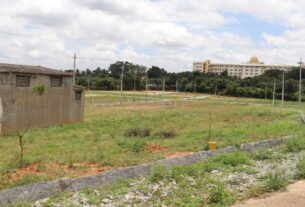Some roads can repair themselves; we just have to build them.
By Praveena P.
Bangalore, April 12, 2019.
Made with ultra high-strength concrete and special fibres, those self-repairing roads can last for a long period of time, since they have the capacity to repair itself. They have been invented by Dr. Nemkumar Banthia.
According to a website named Rush Lane, these roads are built using different materials than regular roads. Unlike the typical concrete road, in which cement is a key component, Banthia’s self-repairing road uses 60% fly-ash (a by-product from burning pulverized coal) and only 40% cement.
The fibres used have a hydrophilic nano-coating, and this helps store water when it rains. The water then helps to heal cracks. When a crack appears, this water gives hydration capability to the un-hydrated cement and produces more silicates to help with bonding capacity. This enables the closing of cracks before they become larger.
The first such road in Karnataka has been built in Thondebavi village, Chikballapur district, Karnataka. The road’s thickness is about 100 mm, which is 60% less than the usual size of Indian roads.
It is cost-effective because the required money of building these roads is 30% less than the cost of building the usual concrete and cement roads. These self-repairing roads have also sustained for a longer period of time than the concrete roads. The website states that, despite the hot Indian summers and heavy rains of the monsoons, the existing road has stayed in good shape.
Banthia said in Rush Lane, “These roads are expected to last for around 15 years. That is three times longer than the capacity of usual cement and gravel roads we build here.” Dr. Nemkumar Banthia is the Scientific Director and Chief Executive Officer (CEO) of the Canada-India Research Centre of Excellence in Canada.
The website mentions that one of the residents in that village said, “This road will help us with our livelihood.” That mud road was the main source of transportation for commuters and helped them with their trade activities.
This was the first road built in Karnataka, and it was done for a trial to see how well these roads would work. The project was considered a success after it stood the test of time across summers and monsoons.
This road also has environmental benefits. Cement roads release greenhouse gases and substituting 60% of cement with fly-ash has proven to be more eco-friendly.
Image Courtesy of The Ubyssey.





